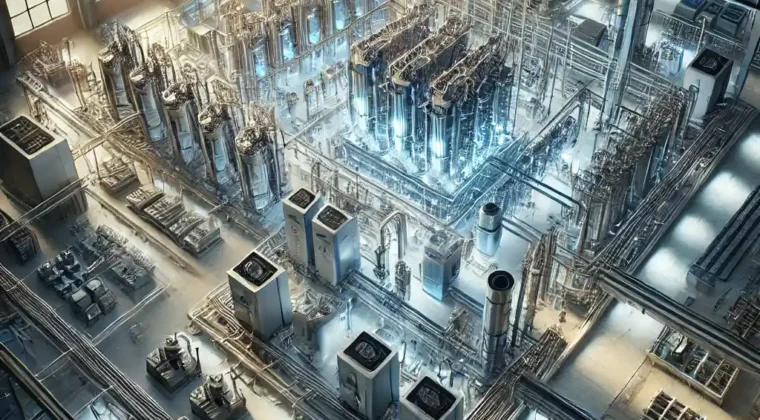In today’s rapidly evolving industrial landscape, the integration of smart technology into pneumatic systems is transforming how businesses operate. Smart pneumatic systems combine the reliability and simplicity of traditional pneumatics with the advanced capabilities of modern technology. This fusion is revolutionizing industrial efficiency by offering real-time data monitoring, predictive maintenance, and enhanced automation capabilities.
The Rise of Smart Pneumatic Systems
Real-Time Data Monitoring:
One of the key advantages of smart pneumatic systems is their ability to monitor performance in real time. Equipped with sensors and IoT (Internet of Things) connectivity, these systems continuously track critical parameters such as pressure, temperature, and airflow. This real-time data allows operators to make informed decisions instantly, optimizing the performance of the entire system.
For example, in a manufacturing plant, smart pneumatic systems can detect fluctuations in pressure and automatically adjust to maintain optimal operating conditions. This not only ensures consistent product quality but also reduces energy consumption and minimizes wear and tear on components.
Predictive Maintenance and Reduced Downtime:
Traditional pneumatic systems often rely on scheduled maintenance, which can lead to unnecessary downtime or unexpected failures. Smart pneumatic systems, however, use predictive maintenance algorithms to analyze data trends and predict when a component is likely to fail. This allows maintenance teams to address issues before they lead to costly breakdowns.
By predicting maintenance needs, smart pneumatic systems reduce unplanned downtime, increase the lifespan of components, and improve overall operational efficiency. This predictive approach not only saves money but also enhances the reliability of the system, ensuring that production lines run smoothly.
Enhanced Energy Efficiency:
Energy efficiency is a critical concern in industrial operations, where energy costs can significantly impact profitability. Smart pneumatic systems are designed to optimize energy usage by adjusting to the exact requirements of each task. For instance, they can regulate air consumption based on the load, ensuring that no energy is wasted.
Moreover, smart pneumatic systems can identify leaks or inefficiencies in real-time, allowing for immediate corrective actions. By reducing unnecessary energy consumption, these systems help companies lower their carbon footprint and achieve sustainability goals.
Advanced Automation and Control
Remote Monitoring and Control:
With the integration of smart technology, pneumatic systems can now be monitored and controlled remotely. Operators can access system data from anywhere, using smartphones, tablets, or computers. This remote accessibility not only enhances flexibility but also allows for quicker responses to any issues that may arise.
For example, in large-scale industrial facilities, remote monitoring enables centralized control of multiple pneumatic systems across different locations. This streamlines operations and ensures that all systems are functioning optimally without the need for constant on-site supervision.
Seamless Integration with Other Systems:
Smart pneumatic systems are designed to integrate seamlessly with other automation systems, such as PLCs (Programmable Logic Controllers) and SCADA (Supervisory Control and Data Acquisition) systems. This interoperability allows for more complex automation processes, where different systems work together to achieve higher levels of efficiency and precision.
For instance, in an automotive assembly line, smart pneumatic actuators can be synchronized with robotic arms and conveyor belts to perform intricate tasks with high accuracy. This level of integration not only speeds up production but also reduces errors and material waste.
Safety and Compliance
Enhanced Safety Features:
Safety is paramount in industrial environments, and smart pneumatic systems contribute to a safer workplace. These systems come equipped with advanced safety features, such as automatic shutdowns in case of critical failures, pressure relief mechanisms, and fault detection alarms.
In hazardous environments, smart pneumatic systems can monitor conditions and automatically adjust operations to prevent accidents. For example, in chemical processing plants, they can detect leaks or pressure build-ups and take immediate action to mitigate risks.
Regulatory Compliance:
Smart pneumatic systems also aid in regulatory compliance by providing detailed records of system performance and maintenance activities. This documentation is crucial for meeting industry standards and regulations, ensuring that operations remain compliant and avoiding potential fines or legal issues.


